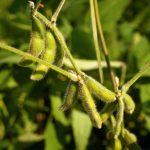Tag Archives Science Notes

Accurate accounting of nitrous oxide needed: researchers
Science Notes: Discussion grows on how much nitrous oxide crop residues emit

Project to sequence 400 soybean genomes, improve future crops
Science Notes: Team plans to consult stakeholders in deciding priority lines to include

Genetic engineering of microbes lower fertilizer dependence
Science Notes: Nitrogen-fixing microbes could help crops pull nitrogen from the air
Hybrid catalyst makes fertilizer, cleans wastewater
Science Notes: New process may help reduce emissions

Researchers build green fertilizer system to reuse wastes, cut emissions
Science Notes: Researchers also want to boost the project’s sustainability by using wind and solar energy to produce green fertilizer

Path found to defeat crop-killing gray mould without chemicals
Science Notes: Study reveals how fungus delivers RNA weaponry

Soil microbes help plants cope with drought
Science Notes: Microbes seen to adapt to drought over time

Roots are capable of measuring heat on their own: study
Science Notes: New insights could further plant breeding

Images of root chemicals offer new insights on plant growth
Science Notes: “Roadmap” lays out where key molecules are distributed along stem cells of corn plant roots

New AI algorithm devised for more accurate plant disease detection
Science Notes: Majority of disease-related features involve distinct patterns
